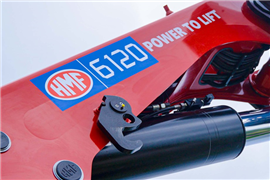RISK MANAGEMENT: How The Right GPS Can Prevent Bridge Strikes
02 August 2019
Bill Smith discusses how GPS navigation can prevent bridge hits.

Across the U.S., bridge strikes are a big deal. Beyond the investments the state of New York has made to its infrastructure, Governor Cuomo announced his state’s 2020 executive budget will include a proposed $25 million for bridge strike prevention on state parkways.
Department of Transportation Acting Commissioner Paul A. Karas said, “I am also greatly encouraged by Governor Cuomo’s executive budget proposal, which will inject millions of dollars in new capital to prevent future bridge strikes from happening across New York State.”
It’s not just New York that sees bridge strikes as a serious issue, though. The Federal Motor Carrier Safety Administration (FMCSA) also views bridge strikes as a serious safety hazard because they often result in injury and loss of life, damage to infrastructure, interruption of commerce, and delays in travel times.
FMCSA and most industry insiders believe that bridge strikes are avoidable by maintaining better awareness of route restrictions along travel paths; typically gained by paying closer attention to road signs, and by the use of only those electronic navigation systems (meaning GPS systems) intended for trucks and buses.
Not all GPS navigation systems are the same
Some companies have learned this the hard way, but not all GPS navigation systems are the same. Many GPS systems are designed for smaller and lighter passenger vehicles, and don’t take into consideration the height and weight of the vehicle. Professional truck and bus drivers should only use navigation systems intended for commercial vehicles because they provide truck and bus drivers with important route restrictions, such as low bridge overpasses.
For commercial vehicle GPS systems, FMCSA offers the following five tips:
- Select an electronic navigation system intended for use by truck and bus drivers.
- Before drivers begin their trip, they should type in all relevant information about their vehicles, so the system can provide the appropriate route.
- Follow the route recommended by the navigation system, but ALWAYS obey traffic signs and advisories (such as low bridge overpasses, axle weight limits, detour signs, variable message signs, etc.).
- Do not engage in distracted driving. Avoid typing or entering addresses or information into the navigation system while driving.
- If your navigation system does not provide automatic updates of the maps, be sure to obtain updates to ensure you are following the most current route planning information.
The reality is that bridge strikes don’t just pose safety risks to drivers and the public; they’re incredibly expensive, too. Besides liability and property damages, the failure to comply with a posted route restriction carries a maximum penalty of $11,000 for a company and $2,750 for a driver. Penalties can vary based on the type of bridge, such as highway overpass, railroad, viaduct, etc.
Also, be sure to check your local, state and federal regulations, as they may require notification of a bridge strike to local authorities – i.e., state police, local police – and be aware: in the case of bridges with railroad crossings, additional reporting steps are necessary, including notifying the railroad authorities.
All this, of course, is avoidable. While there are certainly a lot of unknowns in trucking, your vehicle’s height, width, and weight, as well as accounting for your precise load and trailer specifications, don’t fall into that category. Bridge strikes are one area where it’s absolutely possible to reduce your risk completely.
STAY CONNECTED


Receive the information you need when you need it through our world-leading magazines, newsletters and daily briefings.
CONNECT WITH THE TEAM











